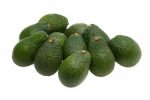
Copper isn’t often thought of as critical to human nutrition, in fact too much and it becomes severely toxic. However, amongst the many biological mechanisms associated with transition metals like manganese and zinc, all three metals participate in enzymatic mechanisms that protect against free radicals, toxic derivatives of oxygen [1].
Copper acts in the inhibition of lipid peroxidation which is vital in protecting cell membranes from damage [2]. It thus helps prevent oxidative stress in cells [3]. The bioavailability of copper is critical in the pathogenesis of Alzheimer’s Disease [4].
Copper is responsible for a number of structural and catalytic properties of multiple enzymes necessary for normal body functions. Superoxide Dismutases (SOD) are a group of metal-containing enzymes with a vital antioxidant role in health. The enzyme SOD1 has a Cu-Zn containing active site group. The presence of these metals and the coordination to certain amino acids is essential for this enzyme’s function. SOD’s are among the first line of defence in the detoxification of products resulting from oxidative stress [4,5].
Copper is necessary for the normal function of the immune system. The mineral is required for host defence mechanisms and red and white cell maturation. Neutropenia and increased incidences of infections and altered immunity are effects of copper deficiency. Some recent research has shown that interleukin 2 is reduced in copper deficiency and is likely to be the mechanism by which T cell proliferation is reduced. These results were extended to show that even in marginal deficiency, when common indices of copper are not affected by the diet, the proliferative response and interleukin concentrations are diminished. The number of neutrophils in human peripheral blood is reduced in cases of very severe copper deficiency. Not only are they reduced in number, but their ability to generate superoxide anions and literally kill ingested microorganisms is also reduced in both overt and marginal copper deficiency [6].
References
[1] Journal of Nutrition, Health & Aging 2006 Sep-Oct; 10(5):377-85
[2] Food & Chemical Toxicology: 2005 Mar;43(3):461-6
[3] Annales Pharmaceutiques Françaises 2006 Nov ;64(6) :390-6
[4] Clinical Neuropathology 2006 Jul-Aug:25(4):163-71
[5] Nutrients in Drinking Water, Water, Sanitation & Health Protection and The Human Environment, World Health Organisation, Geneva. 4. Nutrition ISBN 92 4 159398 9 (NLM Classification: WA 687)
[6] Molecular Aspects of Medicine 2005 Aug-Oct:26(4-5):340-52



Leave a Reply